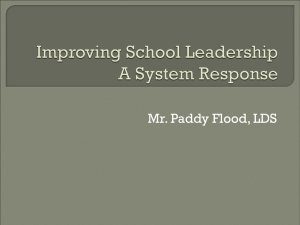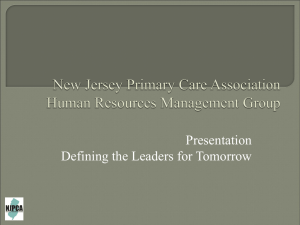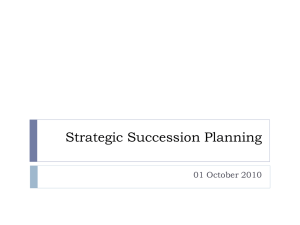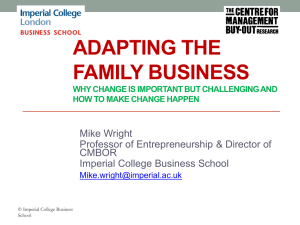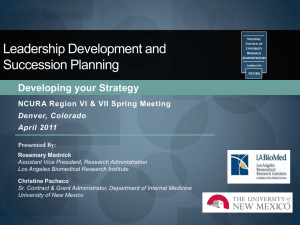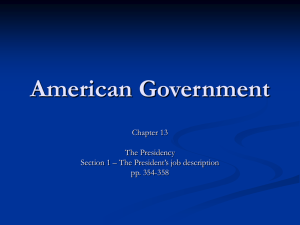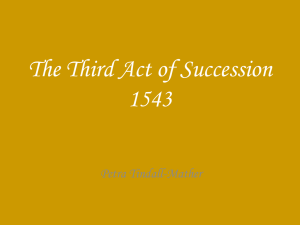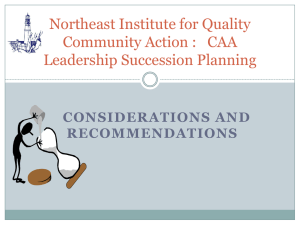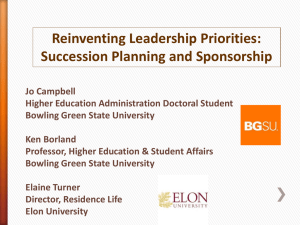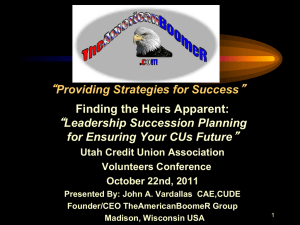Nonprofit Executive Directors
advertisement
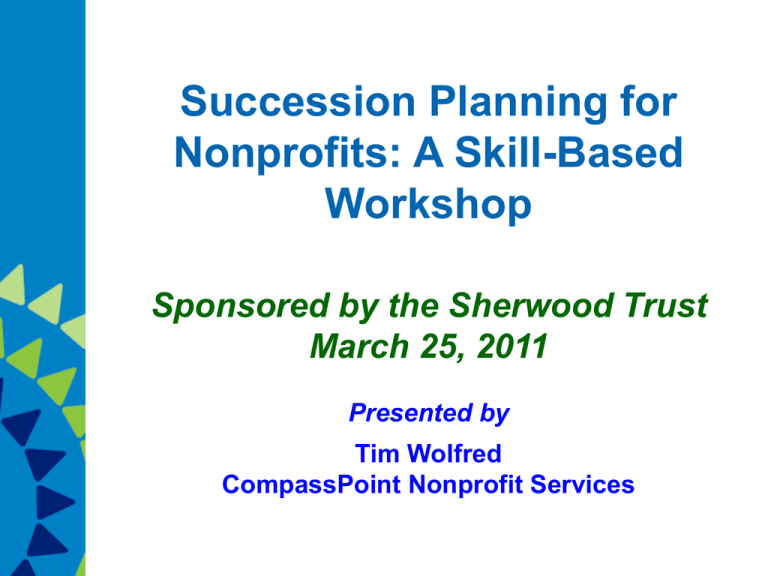
Succession Planning for Nonprofits: A Skill-Based Workshop Sponsored by the Sherwood Trust March 25, 2011 Presented by Tim Wolfred CompassPoint Nonprofit Services 2 Succession Planning What is it? A risk management best practice A leadership development strategy A path to organizational resilience Preparation for a successful leadership handoff A critical board and executive responsibility 3 Background: Lessons Learned Thoughtful succession planning prepares an organization for leadership transitions, expected or unexpected Lack of succession planning can result in a post-transition meltdown With a long-term executive a successful leadership transition requires a lot more up-front preparation than the five months required for search and screening. 4 Benefits of Succession Planning Aligns staff development with strategic vision Builds leadership capacity of staff Makes the top position more “doable” Engages and reassures the board Gives confidence to funders 5 Small Group Discussion Twenty minutes Introductions among the group members Choose a Reporter Briefly, what’s the status of succession planning at your organization? What questions about succession planning do you have? Choose THREE QUESTIONS for report out from your table Succession Planning: 3 Types 1. Strategic Leader Development 2. Emergency Succession Planning 3. Departure Defined Succession Planning 7 Strategic Leader Development Definition: Creating a culture of continuous learning, talent development and accountability Aligning talent with strategic vision Pushing leadership up and down Strategic Leader Development: The Key Cultural Elements Current Strategic Plan Performance goals tied to strategic goals Professional development goals Professional development budget Annual evaluations – board and staff Shared leadership & delegation Strategic Leader Development Starts with STRATEGIC PLANNING Vision: What are the organization’s strategic goals—for next year & five years out? Skills: What competencies do you need to get there? Strategic Leader Development Assess current competencies & identify gaps in skills needed Performance reviews “Strengths Finder” “Strengths Finder 2.0”, Tom Rath, Gallup Press, 2007 Fill in the gaps Training Recruiting Strategic Leader Development Build the Team for “shared leadership” Delegation of duties & authority Shared decision making Shared accountability Next Generation Organizations Nine Key Traits Impact driven Finance and business savvy Continuous learning Shared leadership Wired for policy advocacy Next Generation Organizations Nine Key Traits Multicultural and culturally competent Ambiguity of work-life boundaries Constituents as thought-partners Boards as value add www.compasspoint.org/nextgenorgs Emergency Succession Planning Definition: Preparing for an unplanned HOS departure A risk-management best practice Creates a more “leaderful” agency ESP: Five First Steps 1. Identify critical executive functions 2. Name a backup for each function 3. Develop a cross-training plan for backups 4. Name who would become Acting Executive 5. Specify board’s monitoring & support role for Acting ED Emergency Succession Planning A Resource A template for an emergency succession plan is available at www.CompassPoint.org/ET Small Group Discussion Twenty Minutes Choose a reporter What elements of Strategic Leader Development have you undertaken in your organization? What’s gone well with it? What barriers have you encountered? Choose EMERGING THEMES and THREE BARRIERS to report out. Departure-Defined Succession Planning Attention to the personal and professional issues of the departing executive director Thoughtful planning and activities to ensure organizational sustainability A special opportunity for reflection on where you’ve been, where you want to go, and what it will take to get there DDSP: Five Key Steps Healthy closure with departing executive Strategic Vision update Strategic Review Leadership Agenda Candidate Profile Candidate recruitment Screening & hiring Launching the new executive Executive Readiness Organizational barriers to letting go: No obvious successor “No one else can do this job” Unfinished organizational business 21 Executive Readiness Resources for getting ready A personal coach Peer networks Career planning Negotiating a departure package Workshops on “Next Steps” 22 Executive Departure Path What’s next for me? Setting a date Dealing with legacy & unfinished business Attending to final leadership tasks Emeritus role defined Celebrations 23 Creating a Succession Plan Engage the Board Engage the senior managers Set up a planning committee Acquire the needed resources Funding Consultants 24 Creating a Succession Plan Conduct a “strategic review” to identify vulnerabilities & opportunities Sources of input Executive Director Managers & Staff Board Funders & peer agencies Tools: Surveys & interviews 25 Creating a Succession Plan The review questions: What are our vulnerabilities with departure of our ED? Resource connections Unique skills of the ED “Doability” of the ED job Management TEAM strength Board leadership / independence What are our opportunities to build our community impact? What are out organizational constraints? Creating a Succession Plan Draft the Succession Plan Set strategies to remedy the vulnerabilities & organizational constraints Delineate the ED’s transition tasks Update the strategic vision for greater community impact Update the ED job description and profile of skills needed to pursue the vision Draft the timeline and plan to recruit a successor who has those skills Small Group Discussion Choose a Reporter Read through the “Succession Readiness Checklist” What are the top two or three items that your organization needs to attend to for succession readiness? Choose the top THREE that emerge at your table. The BOARD steps up Puts a committee in charge Attends to its own succession planning Supports the departing executive Addresses agency vulnerabilities Sets future directions Recruits & supports a successor who fits the future 29 Board Leadership Departing ED 30 Board Incoming ED DDSP: Five Things Not to Miss 1. Board ownership & leadership 2. Attention to closure with the exiting executive 3. Managers’ inclusion in future planning 4. Openness to organizational truths 5. Excitement for the future Succession Planning Tools www.compasspoint.org/et Tools Emergency plan template Sabbatical planning checklist Succession readiness checklist Self-reflection tool for executives TimW@compasspoint.org Two-Day Intensive Workshop June 27-28, 2011 For Founders & Long-term Executives Best practices for managing succession & transition Confidential space for addressing personal issues & concerns More information: 33 www.compasspoint.org/nextsteps ShevaD@compasspoint.org Succession Monographs • “Founder Transitions” • “Capturing the Power of Leadership Change” • “Building Leaderful Organizations: Succession Planning for Nonprofits” • “Interim Executive Directors” http://www.aecf.org/KnowledgeCente r.aspx www.managingexecutivetransitions.com

